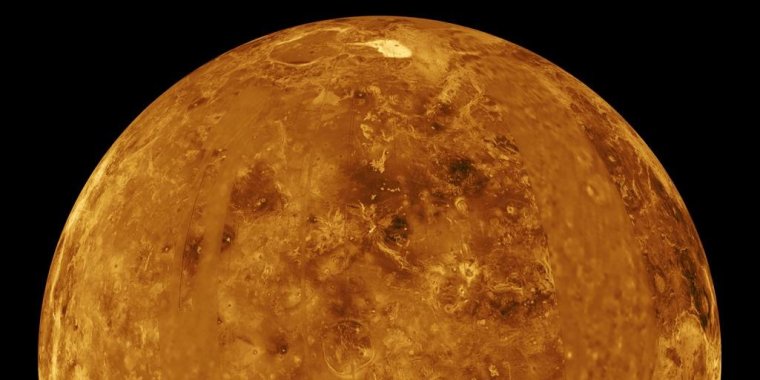| News / Space News |
Venus Atmosphere Rotating 60 Times Faster than Planet Itself
A Venusian day, which is one full rotation of the planet, takes 243 Earth days, but researchers found out that its atmosphere rotates 60 times faster.

Venus. Image credit: NASA/JPL
New research led by the Takeshi Horinouchi of Hokkaido University has revealed that the super-rotation of Venus' atmosphere is maintained near the equator by atmospheric tidal waves that have formed due to solar cooling on the planet's nightside and heating on its dayside. However, the atmospheric turbulence and other various waves have a more strong effect.
This increases with altitude and takes only four earth days to rotate around the entire planet onto the top of the cloud cover.
Because of this super-rotation, the fast-moving atmosphere is forced to transport heat from Venus' dayside to nightside which reduces the temperature differences between both hemispheres.
Horinouchi has said that "Since the super-rotation was discovered in the 1960s, however, the mechanism behind its forming and maintenance has been a long-standing mystery."
Horinouchi and his colleagues from the Institute of Space and Astronautical Science developed a precise method to try and track clouds and from there deduce wind velocities from the collected images. These are provided by the infrared and ultraviolet cameras on the Akatsuki spacecraft which began to orbit Venus in December 2015.
Horinouchi explained that "The group first noticed that atmospheric temperature differences between low and high latitudes are as small as it cannot be explained without a circulation across latitudes. Since such circulation should alter the wind distribution and weaken the super-rotation peak, it also implies there is another mechanism which reinforces and maintains the observed wind distribution."
Further analysis also revealed that the maintenance is actually being sustained by the thermal tide, which then provides acceleration when it comes to low altitudes.
Other earlier studies have shown that atmospheric turbulence and waves may also provide acceleration. However, the current research states that they work oppositely to decelerate the rotation at a very low altitude.
Their findings uncovered the factors that maintain the super-rotation while suggesting a dual circulation system that effectively transports heat across the globe: the meridional circulation that slowly transports heat towards the poles and the super-rotation that rapidly transports heat towards the planet's nightside.
"Our study could help better understand atmospheric systems on tidally-locked exo-planets whose one side always facing the central stars, which is similar to Venus having a very long solar day," Horinouchi added. (Tasnim News Agency)
YOU MAY ALSO LIKE





